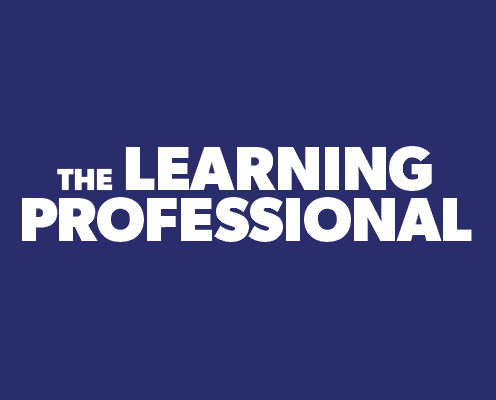FOCUS
What teachers need now
By Claire Rivero
Categories: Implementation, Instructional materials/curriculum, Learning designsAugust 2020
Vol. 41, No. 4
With educators facing conditions we’ve never seen before, Student Achievement Partners wanted to better understand what was happening on the ground — the triumphs, needs, opportunities, and concerns of teachers trying to navigate instruction during the pandemic. A sample of more than 400 survey responses we received in March and April 2020, which include the comments you see on this page, tells the story.
Looking at the survey results, educators’ realities varied dramatically, ranging from districts that were able to get all students online and switch to online learning models within just a few weeks to others that gave almost no guidance to their teachers. As a teacher in one such district wrote, “What am I supposed to be doing? Am I doing enough for my students? I need to be given direction.”
Yet there were many commonalities among the educators we surveyed. Some of the trends included:
- Educators were primarily responsible for designing lessons. Initially, many educators were unsure what their district plans would be for instruction, but by April, 63% of teachers indicated that they themselves were in charge of designing lessons and selecting instructional content for students.
- Most educators stopped using existing curricular programs. Only 21% of educators reported being able to continue using the digital version of their existing curriculum. The rest had to seek out new online resources or create paper packets.
- Student internet access was inconsistent. 66% of teachers reported that they either knew for certain that not all students had internet access or were unsure about the internet or online capacity of all their students. Even among teachers who were instructed to use the digital version of their existing curriculum, 67% lacked clarity about their students’ internet access.
- Districts were divided over whether to continue with new instruction. 60% of teachers reported that their districts continued to teach new material to some degree, while 40% of teachers reported only being able to go over previously taught content.
- Professional learning capacity grew. 80% of educators indicated that they had interest and capacity to pursue professional learning opportunities virtually. Of these teachers, 37% indicated that their capacity for professional learning was actually higher than it would normally be at this time of year.
As we reviewed the findings, we were surprised that, with all of the added responsibility and challenges of switching to remote learning models, most educators shared an appetite, even an increased appetite, for professional learning. But as we read the concerns and specific questions educators voiced, it quickly became clear why there was so much interest in professional learning: Teachers had new learning needs.
Implications for Professional Learning
When school resumes for the 2020-21 school year, teachers will have new support needs, and the old playbook for professional learning likely won’t suffice. They’ll be facing a set of challenges that likely existed to some degree in the past, but that are now underscored by the learning disruptions due to COVID-19.
So how can those who design professional learning ensure it addresses the needs voiced by educators this spring? Now more than ever, we recommend that professional learning follow the principles we laid out in Principles for High-Quality, Standards-Aligned Professional Learning (Student Achievement Partners, 2020a).
Professional learning should be content-focused.
Professional learning must be tied to the grade-level content teachers will be expected to teach. This includes understanding how to scaffold instruction and provide just-in-time remediation that helps address students’ unfinished learning from the previous year.
Without action-focused, practical guidance on how to scaffold grade-level content and provide access to all students, teachers may resort to teaching months of off-grade content (which would leave students off-track in terms of a college- and career-ready trajectory), or keep certain students from grade-level content based on assessment data.
Without action-focused, practical guidance on how to scaffold grade-level content and provide access to all students, teachers may resort to teaching months of off-grade content. Share on XThe latter has serious equity implications and will lead to wider achievement gaps.
There is also the question of what content to prioritize given new time constraints. Many teachers will have limited face-to-face or synchronous learning time with students this fall as districts switch to alternate-day schedules or hybrids of synchronous and asynchronous virtual instruction. Student Achievement Partners (2020b) has outlined priority instructional content for 2020-21 to help decision-makers leverage existing efficiencies in the standards to address unfinished learning while keeping students on-track with grade-level college- and career-ready learning.
Professional learning should be teacher- and student-centered.
A teacher-centered model of instruction is one in which teachers feel safe to name their own learning needs, take risks, and make mistakes and learn from them. In our surveys, respondents could remain anonymous if they chose, and that anonymity may have freed many to share candidly about how little they knew about remote learning platforms, how to engage students remotely (especially in light of uncertain internet access), and what content they were supposed to be teaching in the first place. This freedom needs to extend to professional learning settings, even when anonymity isn’t an option, since it’s the only way the learning can be responsive to teachers’ real needs.
Professional learning must also support teachers in creating student-centered learning experiences regardless of whether students experience learning in person, digitally, or with pencil and paper. This spring has focused educators on their own biases, differing expectations for students, and the way their own actions may create inequitable learning environments.
Professional learning must also support teachers in creating student-centered learning experiences regardless of whether students experience learning in person, digitally, or with pencil and paper. Share on XReflecting on these realities and strategies to create more inclusive learning environments must be a part of professional learning. We recommend following the Equity Matters! newsletters produced by Montgomery County Public Schools as an example of the kinds of topics to integrate into professional learning (Montgomery County Public Schools, 2020).
Professional learning should be instructionally relevant and actionable.
Teachers need professional learning that goes beyond sit-and-get to actually allowing them to practice and reflect on new strategies and learning. To do this, consider building in time to:
- Allow teachers to practice with new tools (this will be especially important for teachers developing new skills with remote learning platforms), resources, or strategies, as well as time to receive feedback;
- Organize sessions and collaborative work time by content focus and grade so teachers can target specific learning goals and challenges; and
- Include regular, collaborative work sessions where teachers can continue to design, rehearse, and refine instructional practice strategies to respond to classroom (including the virtual classroom) needs.
The Road Ahead
This past spring has brought its fair share of challenges, but it has also opened up new opportunities for reflecting and improving the way we support teachers.
It is important that we seize this opportunity to rethink how professional learning looks and feels. Teachers have shared what they need. Now designers must listen and act.
In their words
“How do I keep in touch with students to provide encouragement, praise, and assistance without overwhelming parents with messages?”
“How can I effectively teach my students the remaining content and standards when we are only allowed 2.5 hours a day of work and only four new content lessons per week as per my district leadership?”
“How can I engage the students who can’t join my online classes but who still try to complete the quizzes and tests I assign virtually? The students who haven’t attended my online classes often fail.”
“Are my students actually learning?”
References
Montgomery County Public Schools. (2020, May). Equity Matters! spark.adobe.com/page/tOtHxEiUvXo8U
Student Achievement Partners. (2020a). Principles for high-quality, standards-aligned professional learning. achievethecore.org/page/3242/principles-for-high-quality-standards-aligned-professional-learning
Student Achievement Partners. (2020b). 2020-21 priority instructional content in English language arts/literacy and mathematics. achievethecore.org/page/3267/2020-21-priority-instructional-content-in-english-language-arts-literacy-and-mathematics
Categories: Implementation, Instructional materials/curriculum, Learning designs
Recent Issues
BUILDING BRIDGES
December 2024
Students benefit when educators bridge the continuum of professional...
CURRICULUM-BASED PROFESSIONAL LEARNING
October 2024
High-quality curriculum requires skilled educators to put it into...
LEARNING TO PIVOT
August 2024
Sometimes new information and situations call for major change. This issue...
GLOBAL PERSPECTIVES
June 2024
What does professional learning look like around the world? This issue...













